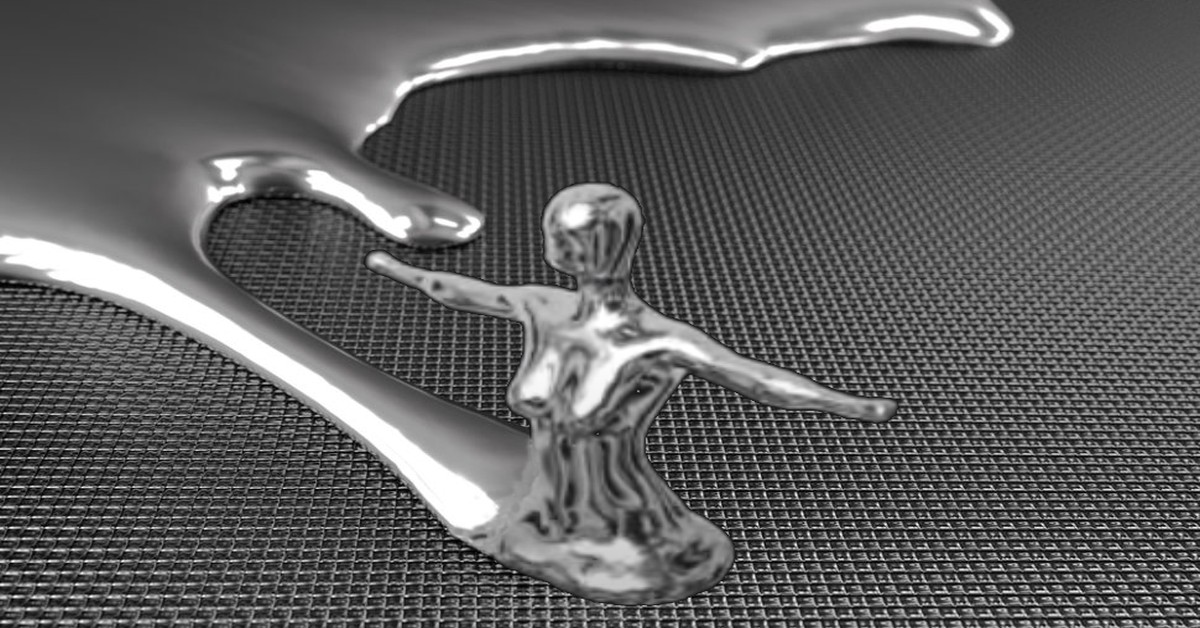A pioneering way of controlling liquid metal without physical contact could fundamentally change how we create electronics – and maybe even a cyborg one day, like the one you saw in the movie Terminator 2.

In a landmark discovery, researchers at the FLEET University of Wollongong (UOW) have controlled liquid metal without contact, using a small voltage and a magnet. The research team managed to move the metal in any direction, manipulating it into unique, levitating shapes such as loops and squares. Non-contact manipulation of liquid metal allows us to exploit and visualize electromagnetism in new ways, enabling new strategies for advanced manufacturing of dynamic electronic structures.
“By combining electromagnetic induction and fluid dynamics, we were able to manipulate the liquid metal in a controllable way, and move like soft robotics,” research leader Professor Xiaolin Wang said. “The research in liquid metals was inspired by biological systems as well as science fiction, including the shape-shifting, liquid metal ‘T-1000’ robot in the James Cameron-directed film Terminator 2.”

The liquid metal used for the experience was galinstan, an alloy of gallium, indium and tin, which has high surface tension and thus favors the formation of droplets. When a small ‘triggering’ voltage was applied, the galinstan became a wire due to the voltage causing electrochemical oxidation, which, in turn, lowers the metal’s surface tension.
“Because these reactions require an electrical current passing through the wire, it becomes possible to apply a force to the wire via application of a magnetic field (ie, electromagnetic induction; the same mechanism as drives motion in an electric motor),” Professor Wang said.
In this way, the wires can be made to move in a controllable path, and can even be suspended (against gravity!), resulting in controlled, designed shapes.
So far, free-flowing liquid streams have been particularly difficult to manipulate in a non-contact manner. The challenge for the team at UOW was to achieve highly-controlled changes in directionality or complex shaping of liquids, especially without disrupting the cross-sectional shape of the stream.
“There was an enjoyable element of discovery in this scientific process. Once the team started working on this topic, we realised that there is much more behind it,” Professor Wand said.
“The liquid metal wires form by applying a small voltage (approximately 1 volt). However, our team found that a considerable electrical current (up to 70 mA) could be measured in the resulting wires.
“There was a creative leap at this point, as the team realised that electromagnetic induction could be used to control the liquid metal wires in a non-contact manner. This was the key to finally successfully solving the challenge, thereby developing a new strategy for shaping fluids in a non-contact manner.”

This type of non-contact manipulation is made possible by the material’s unique fluid dynamic and metallic properties. Being soft, current-carrying conductors, the wires present minimal resistance to manipulation under a controlling the magnetic field. Due to this low resistance movement, the wires can easily be manipulated in designed ways.
“Usually, liquid streams break up into droplets. For example, streams of water coming from a faucet or hose start out as a cylinder, but quickly break up into droplets. However, the liquid metal wire has a string-like property, similar to waving ribbons in the air. That property allowed us to manipulate the liquid metal stream into continuous loops and other shapes,” said co-corresponding author Prof Michael Dickey (North Carolina State University).
The discovery is a milestone in a line of experiments involving liquid metals alloys. For example, the American Chemical Society recently revealed a new material that solves to major problems experienced by similar substances. In that experiment, the researchers also used magnets to manipulate the metal, but were not able to move it as freely – most probably due the absence of the small triggering voltage used in the present experiment. The results were more than spectacular though:
These discoveries could revolutionize soft robotics even in the short term and indeed have the potential of making movies like ‘The Terminator’ transcend make-believe.
